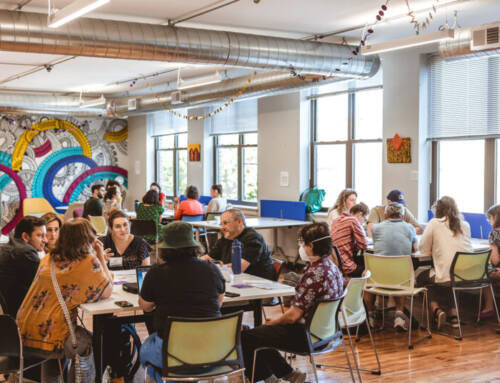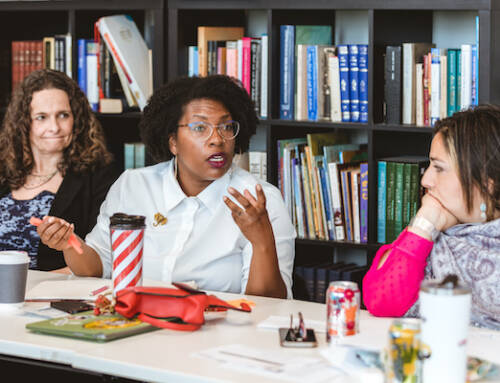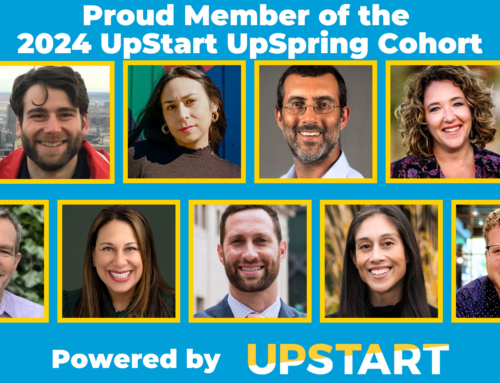An article from eJewish Philanthropy.
My 4-year-old daughter has been suffering terribly from seasonal allergies. Her normally bright, eager eyes have been all but shut closed by red itchiness, tears, and crust. For the past three months, we have taken her back and forth to the allergist, who has tried a variety of anti-histamine eye-drops. Nothing has helped. We accepted her new normal more cranky, less playful, and constantly rubbing her eyes. We finally saw an ophthalmologist, who declared that our daughters was one of the worst allergic reactions she had ever seen, and put her on an intense course of eye drop steroids. In just a couple of days, our clear-eyed daughter was back to her joyous, mischievous self.
But theres a catch.The medication shes on is so strong that she cannot stay on it for more than two weeks. We have been given a short respite from a chronic state. We do not know what will happen after this two-week period. Perhaps the pollen will disappear from the air. Perhaps the alleviation of the symptoms will allow less strong medications to work. And perhaps shell be itchy and teary and crusty all over again, and well be back at square one. If that is the case, as it likely is, we will need to do the work we have been unable to do in all these months: identify the cause of the problem, and discover a sustainable solution for it.
I share this story because it illustrates a core concept related to the challenge of orchestrating meaningful change a distinction, introduced by Ronald Heifetz, between technical and adaptive work.
The challenge facing my daughter and her caregivers is adaptive; the cause is hard to identify, and therefore so is the solution. The eye drops she was recently given are a technical solution to an adaptive problem. Technical solutions are critical; they address a clear problem in her case, severely inflamed eyes and offer an invaluable solution an anti-inflammatory drop. But there can be technical components to adaptive problems. And technical solutions address the technical aspects of a problem, but do not solve the greater problem. Those problems often require a tremendous amount of work, and change in values and behaviors.
Dr. Yehuda Kurtzer, in his recent article entitled Needed: A Model of Mutually Beneficial Partnership, writes:
I sense that there is something deeply problematic in the pervasive conversation about leadership development: namely, that by leadership our organizations are actually talking about followership, and we have replaced leading with replicating. Do we want to grow or do we want to survive? To break new ground or to replace board seats? Marty Linsky and Ron Heifetz talk about leadership as a fundamentally subversive activity: it involves moving people and organizations to unprecedented places and evolving stagnant organizations along an innovation continuum. When leadership development is done in order to fill existing slots or structured roles, it suggests that we have no interest in dramatically changing or re-routing our activities; instead we are merely trying to ensure the continuity of our own ideas, or the validity of a standard way of doing business.
Kurtzer raises a critical question for us as a Jewish community: are we looking for the root cause, the adaptive issues, behind our challenges? Or are we searching for those magic drops, those technical solutions that mask the symptoms and buy us time? The eye drops my daughter is currently receiving can cause glaucoma and cataracts. Though helpful in the short-term, technical solutions to adaptive problems can be ultimately blinding. Sometimes, though, even when we know this intellectually, we continue to drip those drops onto our problems, so grateful for the respite they give us, for the semblance of success we so passionately want.
As someone who works in the innovation sector, and who is involved in bringing best practices in innovation and change to established Jewish organizations, this personal experience has reminded me how difficult it is to do real change work, and identify and address adaptive issues. It requires a willingness to suspend assumptions, structures, and values, and engage the space of possibility, which includes the possibility of mistakes and failure. Perhaps the first step in providing pragmatic solutions to leadership, change, and growth questions facing the Jewish community is to acknowledge how frightening and difficult this work really is. We resist it on the personal level; we resist it on the communal level. Because it is truly terrifying to admit that our solutions have not solved our problems, and that we may have been on the wrong path all along.
This acknowledgement is the first step of change. In a creative approach to change developed at Stanford University, called the Design Thinking process, it is called empathy. I believe that if we begin to have more empathy for one another, and for the tremendous challenge, and opportunity, that faces us as we attempt to design Jewish life for the next century, we can begin to better navigate the realm of our adaptive challenges, and emerge with a more clear vision of who we wish to be, and how to become our best, thriving selves.
Maya Bernstein is an associate at UpStart.
Our purpose is to enable entrepreneurs to bring bold Jewish ideas to light. We help them reach Up to people in new ways that are meaningful, more inclusive, and create a brighter future for our Jewish community and the world we share.




